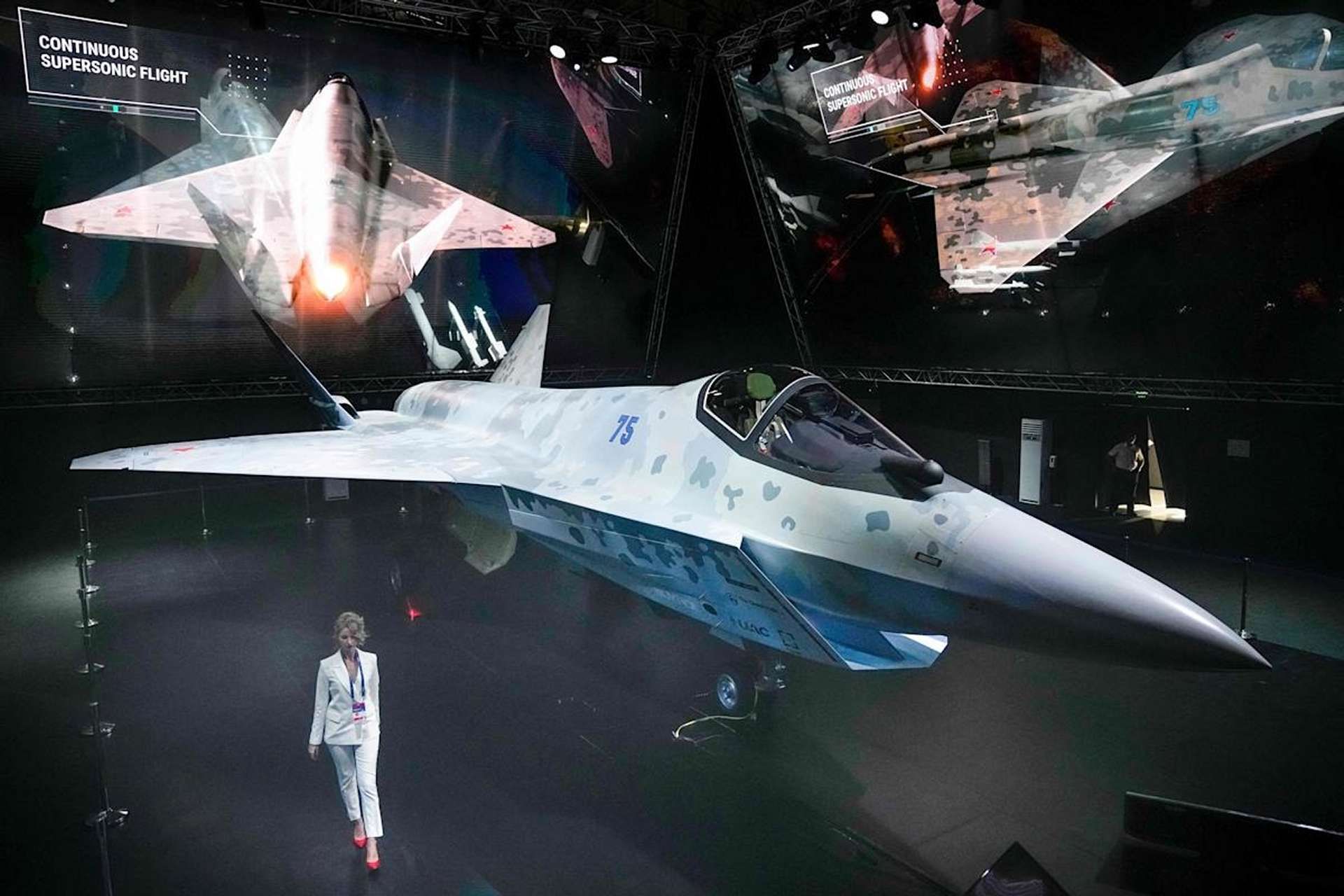Breaking News
Breaking News: Russia and Belarus to Co-Produce Su-75 Checkmate Stealth Fighter, Raising NATO Concerns.
On May 21, 2025, United Aircraft Corporation (UAC) and the Belarusian defense industry officially launched discussions on the co-production of the Su-75 Checkmate fifth-generation fighter jet. This strategic cooperation marks the revival of Belarus’ high-end aerospace manufacturing capabilities, dormant since the dissolution of the USSR. It also signals a geopolitical shift as NATO could soon face the deployment of Russian-designed stealth fighters near the Baltic, Polish, and Finnish frontiers. The involvement of Belarus as both producer and potential first foreign user of the Su-75 has far-reaching implications for regional deterrence dynamics and defense posturing across Eastern Europe.
Follow Army Recognition on Google News at this link

The announcement of Belarus joining Russia in co-producing the Su-75 Checkmate is not only a symbolic return to Soviet-era aerospace capabilities but a strategic inflection point in Eastern Europe’s military balance (Picture source: A. Zemlianichenko)
The Su-75 Checkmate, developed by Sukhoi under UAC and presented at MAKS 2021, is a fifth-generation light stealth fighter optimized for cost-effective performance and export. Designed to compete with the American F-35 and Chinese J-31, the Su-75 integrates a single-engine configuration and stealth shaping techniques borrowed from the Su-57 program. It features a top speed of Mach 1.8 to 2.0, a maximum range of nearly 3,000 kilometers, and a combat payload of up to 7,400 kg. The aircraft includes advanced artificial intelligence for pilot assistance, radar stealth features, and a versatile internal weapon bay. The Su-75 is capable of engaging air, ground, and maritime targets, positioning itself as a multipurpose platform suited for nations seeking cutting-edge technology without the financial burden of twin-engine fighters.
The operational trajectory of the Su-75 remains in its early stages. Although flight testing is expected to begin in 2025, two prototypes are already under production at the Komsomolsk-on-Amur Aviation Plant. Designed with export in mind, the fighter made its international debut at Dubai Airshow 2021, reflecting Russia’s aim to penetrate markets in Asia, the Middle East, and Latin America. Despite the lack of confirmed serial production, the joint project with Belarus may deliver its first operational aircraft to Minsk, making Belarus the initial foreign operator and thus offering a foundational launch customer, crucial for the commercial future of the Checkmate.
The Su-75’s lightweight configuration and AI-supported avionics distinguish it from peers like the F-35 and J-31. While lacking some of the more mature sensor fusion of the F-35, the Checkmate compensates with affordability and modularity, potentially lowering its cost below $30 million per unit. Its radar cross-section is expected to be significantly lower than that of fourth-generation fighters, thanks to internal weapon storage and refined aerodynamics. Compared to historical analogues such as the MiG-21, which was widely exported in the Cold War, the Su-75 aims to modernize that legacy with stealth and network-centric warfare capabilities, offering small and medium powers a leap into next-generation air combat.
The strategic consequences of Belarusian Su-75 deployment are significant. Should Belarus acquire these fighters through co-production, NATO's air defense planning along the Suwałki Gap, the narrow corridor linking the Baltic States to Poland, would need reevaluation. Su-75s operating from Belarusian bases could potentially threaten air superiority over northeastern Europe, reducing NATO’s warning time and complicating force projection in the region. Moreover, the integration of such platforms under the Union State framework reflects Vladimir Putin’s strategy to equip allied states with sophisticated tools to reinforce deterrence and demonstrate autonomy from Western defense architectures.
Budgetary aspects of the Su-75 program remain opaque, but Russian estimates have floated a per-unit cost far below Western fifth-generation fighters. Belarus’s participation as both producer and buyer will reduce logistics costs and offer local employment and technology transfer. No final contract has been signed as of May 2025, but Belarus is widely expected to be the inaugural client, which would unlock serial production. Other nations reportedly interested include India, Algeria, the UAE, and Vietnam, although none have formally committed.
The announcement of Belarus joining Russia in co-producing the Su-75 Checkmate is not only a symbolic return to Soviet-era aerospace capabilities but a strategic inflection point in Eastern Europe’s military balance. For the first time in post-Soviet history, a NATO-adjacent country allied with Russia could field stealth fighters capable of challenging Western air dominance across the Baltic and Polish theaters. This development underscores Moscow’s intent to re-arm its closest allies with next-generation systems and complicate NATO’s strategic calculus. The Su-75’s affordability, modularity, and stealth capabilities, when paired with Belarusian participation, create both an industrial revival in Minsk and a new axis of threat projection for the Union State.




























